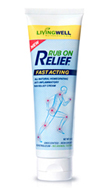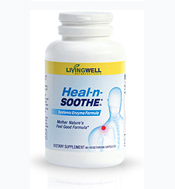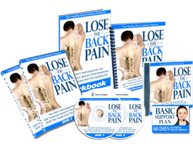There is no such thing as a good or bad stretch…It’s all in how you do it…
Brad Walker, Exercise Scientist & Sports Trainer.
Over the last few months my inbox has been flooded with concerns about which stretches are good and which stretches are bad. In all cases someone has told the inquirer that they shouldn’t do this stretch or that stretch, or that this is a good stretch and this is a bad stretch. Some people have even seen stretches on our web site and emailed me to say (out of genuine concern) that this is a bad stretch because their coach, trainer or friend told them so.
So, are there only good stretches and bad stretches? Is there no middle ground? And if there are only good and bad stretches, how do you decide which ones are good and which ones are bad?
Let’s put an end to the confusion once and for all…
There is no such thing as a good or bad stretch!
Just as there are no good or bad exercises, there are no good or bad stretches; only what is appropriate for the specific requirements of the individual. So a stretch that is perfectly okay for me, may not be okay for you or someone else.
Let me give you an example. You wouldn’t ask someone with a shoulder injury to do push-ups or freestyle swimming, but that doesn’t mean that these are bad exercises. Now, consider the same scenario from a stretching point of view. You wouldn’t ask that same person to do shoulder stretches, would you? But that doesn’t mean that all shoulder stretches are bad.
You see, the stretch itself isn’t good or bad, it’s the way it’s performed and who it’s performed on that makes it effective and safe, or ineffective and harmful. To place a particular stretch into a category of “Good” or “Bad” is foolish and dangerous. To label a stretch as “Good” gives people the impression that they can do that stretch whenever and however they want and it won’t cause them any problems.
The specific requirements of the individual are what’s important!
Remember, stretches are neither good nor bad. Just like a motor vehicle, it’s what you do with it that makes it good or bad. However, when choosing a stretch there are a number of precautions and “checks” you need to perform before giving that stretch the okay.
1. Make a general review of the individual.
Are they healthy and physically active, or have they been leading a sedentary lifestyle for the past 5 years? Are they a professional athlete? Are they recovering from a serious injury? Do they have aches, pains or muscle and joint stiffness in any area of their body?
2. Make a specific review of the area, or muscle group to be stretched.
Are the muscles healthy? Is there any damage to the joints, ligaments, tendons, etc.? Has the area been injured recently, or is it still recovering from an injury?
If the muscle group being stretched isn’t 100% healthy avoid stretching this area altogether. Work on recovery and rehabilitation before moving onto specific stretching exercises. If however, the individual is healthy and the area to be stretched is free from injury, then apply the following to all stretches.
1. Warm up prior to stretching.
Warming up prior to stretching does a number of beneficial things, but primarily its purpose is to prepare the body and mind for more strenuous activity. One of the ways it achieves this is by helping to increase the body’s core temperature while also increasing the body’s muscle temperature. By increasing muscle temperature you are helping to make the muscles loose, supple and pliable. This is essential to ensure the maximum benefit is gained from your stretching.
2. Stretch gently and slowly. (Avoid bouncing)
Stretching slowly and gently helps to relax your muscles, which in turn makes stretching more pleasurable and beneficial. This will also help to avoid muscle tears and strains that can be caused by rapid, jerky movements.
3. Stretch ONLY to the point of tension.
Stretching is NOT an activity that was meant to be painful; it should be pleasurable, relaxing and very beneficial. Although many people believe that to get the most from their stretching they need to be in constant pain. This is one of the greatest mistakes you can make when stretching.
4. Breathe slowly and easily while stretching.
Many people unconsciously hold their breath while stretching. This causes tension in your muscles, which in turn makes it very difficult to stretch. To avoid this, remember to breathe slowly and deeply during your stretching. This helps to relax your muscles, promotes blood flow and increases the delivery of oxygen and nutrients to your muscles.
An example
Let’s take a look at one of the most controversial stretches ever performed and see how the above would be applied.
The stretch to the right causes many a person to go into complete melt-down. It has a reputation as a dangerous, bad stretch and should be avoided at all costs. Even just thinking about this stretch may cause injury.
So why is it that at every Olympic Games, Commonwealth Games and World Championships you see sprinters doing this stretch before their events? Let’s apply the above checks to find out.
Firstly, consider the person performing the stretch. Are they healthy, fit and physically active? If not, this isn’t a stretch they should be doing. Are they elderly, over weight and unfit? Are they young and still growing? Do they lead a sedentary lifestyle? If so, they should avoid this stretch!
This first consideration alone would prohibit 50% of the population from doing this stretch.
Secondly, review the area to be stretched. This stretch obviously puts a large strain on the muscles of the hamstrings and lower back. So if your hamstrings or lower back aren’t 100% healthy, don’t do this stretch.
This second consideration would probably rule out another 25%, which means this stretch is only suitable for about 25% of the population. Or, the well trained, physically fit, injury free athlete.
Then apply the four precautions above and the well trained, physically fit, injury free athlete can perform this stretch safely and effectively.
Remember, the stretch itself isn’t good or bad. It’s the way it’s performed and who it’s performed on that makes it effective and safe, or ineffective and harmful.
Article by Brad Walker. Brad is a leading stretching and sports injury consultant with nearly 20 years experience in the health and fitness industry. For more articles on stretching, flexibility and sports injury, please visit. The Stretching Institute.
Top Recommendations
Here are the Top Recommended Solutions for Back and Neck Pain

Natural Pain Reliever delivers instant relief from chronic pain! This pain fighting formula penetrates deep into your muscle tissue and repairs damage to your body's cells - where all of your muscle pain starts. Proven to be 100% Effective, Rub it on and the pain is gone!
Click Here to Learn More
Heal-n-Soothe™ is a combination of the most powerful natural anti-inflammatory and pain relieving ingredients known to man... and have been scientifically proven to work. And unlike NSAID's, there are no dangerous side effects..
Click Here to Learn More
Get rid of your back-pain for good. Join over 56,712 people who've erased back pain and sciatica from their lives. This complete back pain relief system will show you how to identify the true cause of your pain, and get lasting relief once and for all!
Click Here to Learn More
